How to heat a pond in winter – 5 ways to prevent it from freezing over
Help wildlife in your garden over winter by keeping your pond in action
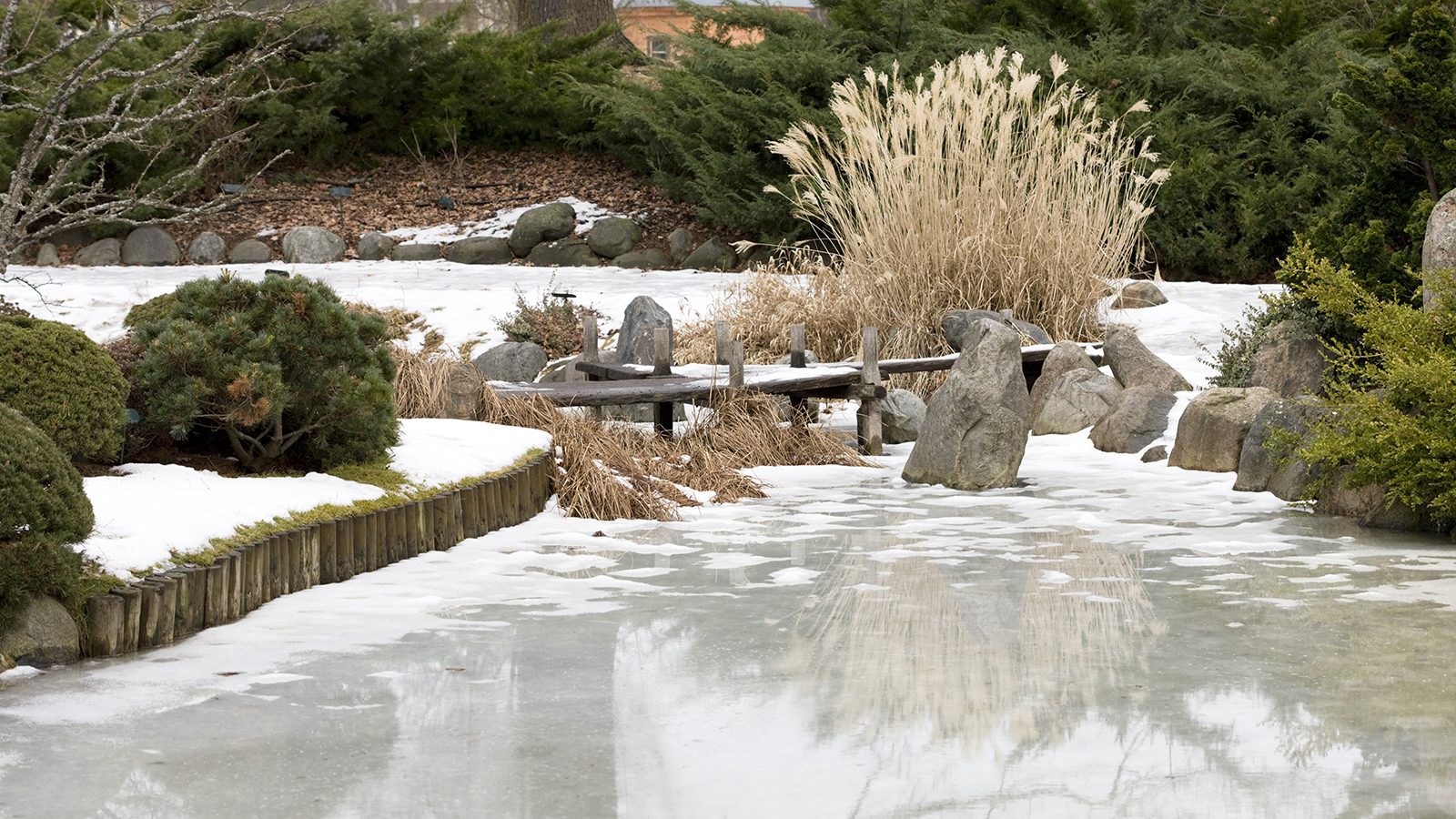

You don't always have to know how to heat a pond in winter. In fact, for many gardeners, it won't be necessary, even for those who have a few resident goldfish or koi.
For starters, these cold-blooded fish are winter hardy, so they can cope with cold temperatures and the odd freeze as long as there's enough oxygen. This is where a de-icer can come in handy – even just melting a hole in the ice with warm water can do the trick.
If, however, you experience very cold winters, or keep particularly expensive fish (or ones that are more suited to warmer climates), then you might prefer to heat your pond as a precaution.
Heating a garden pond can also reduce the stress on the structure itself, preventing the pipes and other systems from freezing and becoming damaged.
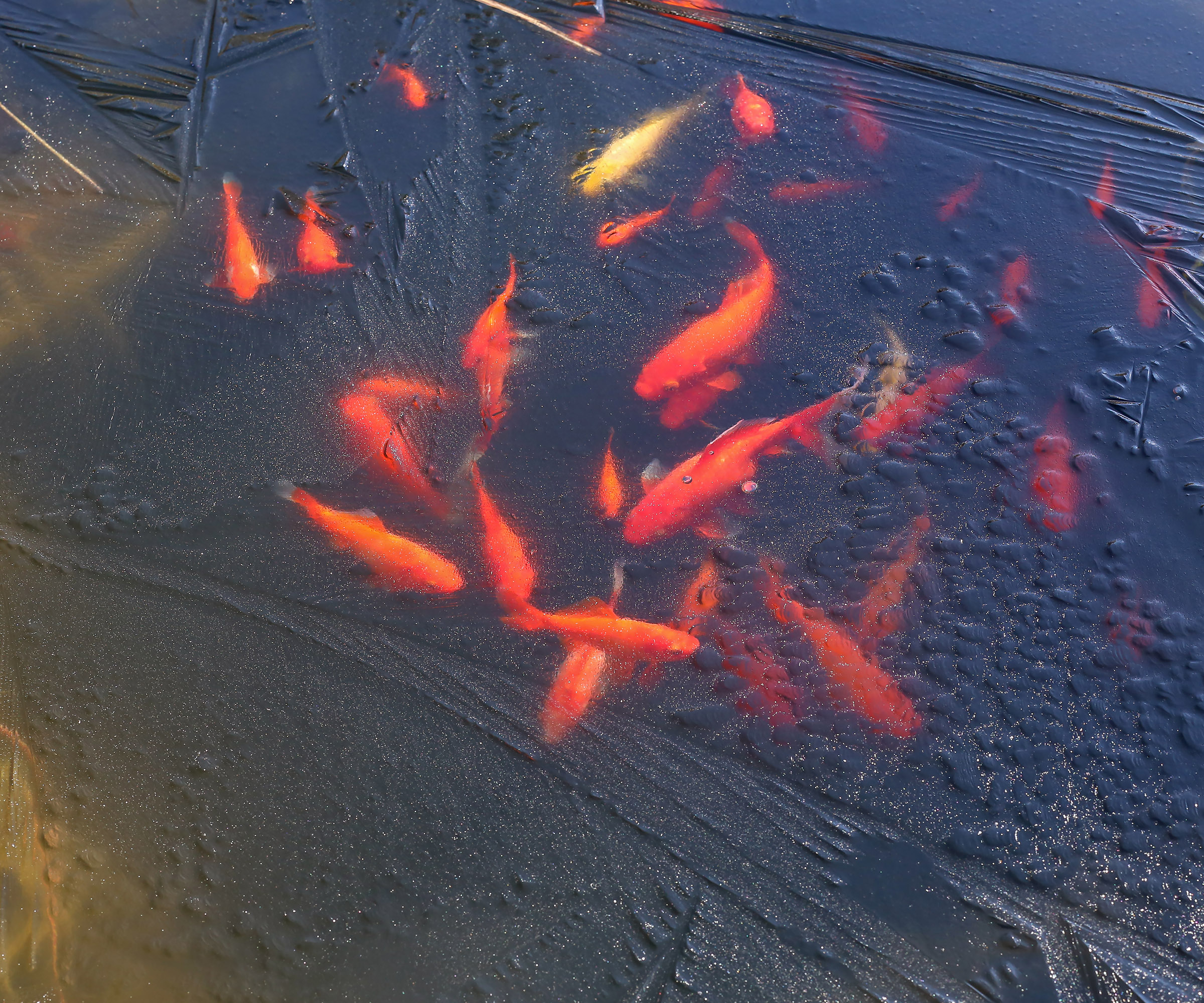
Goldfish will generally cope with the cold without the need for a pond heater, as long as there's a hole in the ice
5 ways to heat a pond in winter
There are several options for heating a pond in winter, which you may wish to add to your winter gardening checklist. We've rounded up the most common approaches below.
1. Install a submersible electric heater
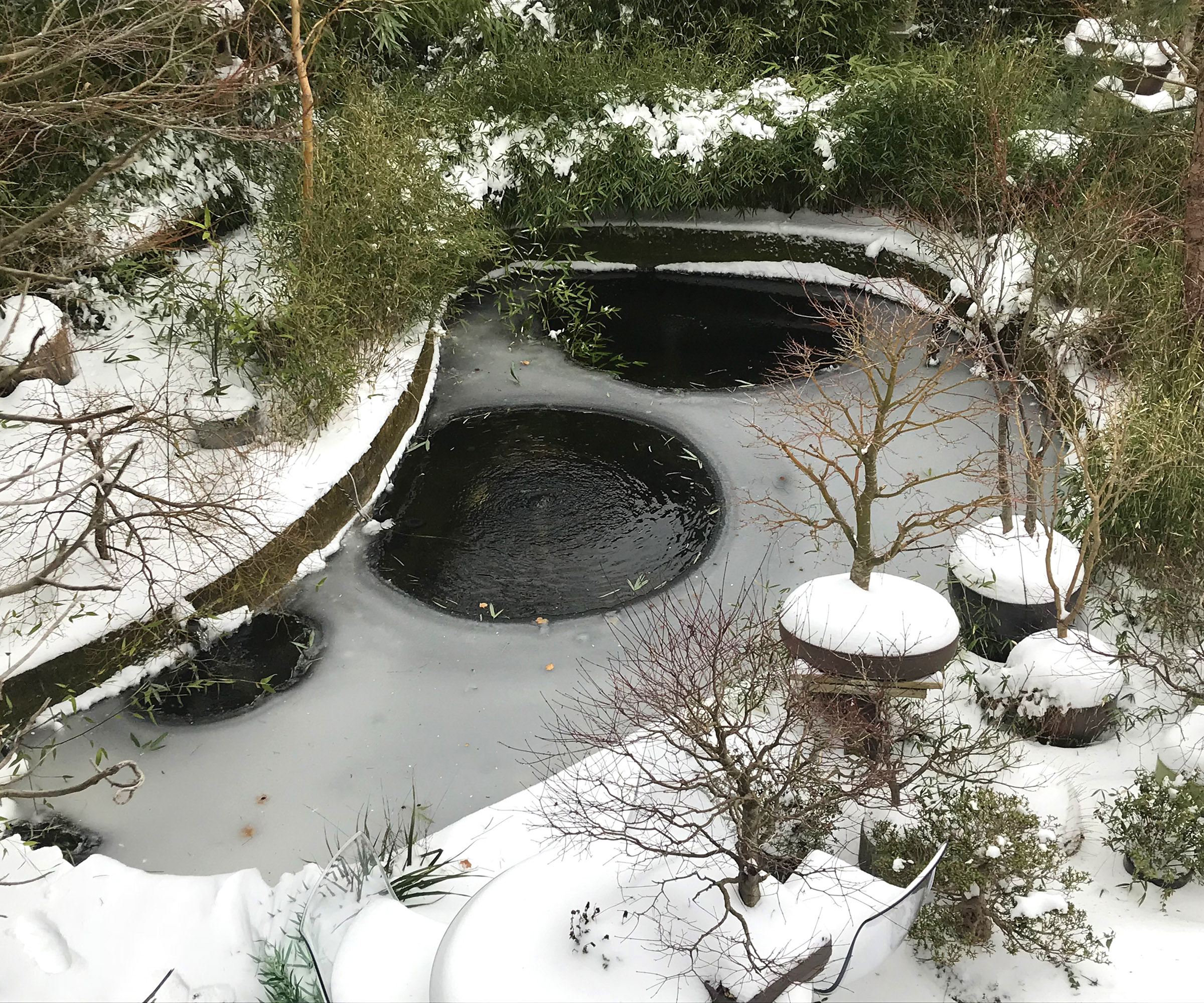
Keep areas of your pond warm with electric heaters
An electric heater is one of the most popular heating systems for a pond in your winter garden. However, unless you have a very small pond, you may need more than one if you want to heat the entire thing.
But, even in larger ponds, just one or two can be very effective at creating warm pockets of water for fish to hibernate in. You will need an outdoor socket to plug the heaters into, but other than that they're a good low-maintenance option.
Design expertise in your inbox – from inspiring decorating ideas and beautiful celebrity homes to practical gardening advice and shopping round-ups.
Look for one with a temperature control, and automatic shut-off function to prevent it from overheating – particularly if you're using it in smaller ponds. Try this K&H Pet Products Thermo-Pond Perfect Climate Deluxe Pond Deicer at Amazon.
Position the heater at the deepest part of your pond for the best results. If you place it closer to the surface (or near any pumps), the heat will be lost more quickly.
Pair with a floating de-icer to allow toxic gases to be released and oxygen in, and you have a relatively budget-friendly and easy-to-install set-up to help your fish over winter.
2. Use a gas heat exchanger

Built in heating systems are best for larger ponds
This method has a higher purchase and installation cost (you'll need a professional to set it up for you), but after that, it's generally quite economical to run – cheaper than electric heaters. It's also a good way to heat larger ponds.
When you build a pond the exchanger is hooked up to a boiler. In some cases, this can be your household boiler, but in others you may need to buy a separate unit. Then, pond water is pumped through it, heating up as it does so.
A thermostat can be used in conjunction with this approach, which will activate the boiler only when the pond starts to get too cold.
3. Try an in-line electric heater
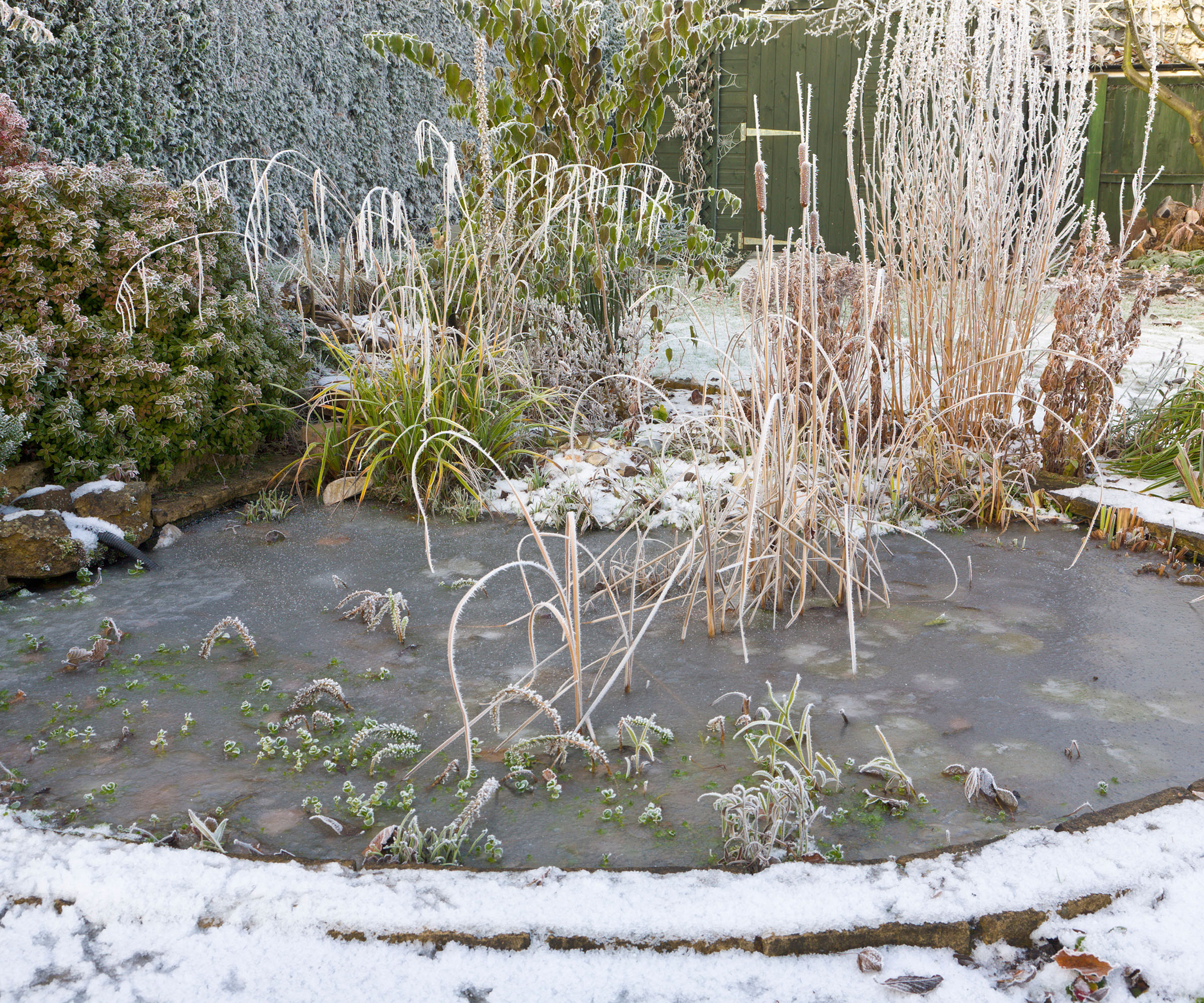
An in-line heater is connected to your pond's plumbing system
Another electricity-powered option for heating a pond in winter is an in-line heater.
The system is installed within your pond's plumbing – generally after the pump. Water is pushed through a heating chamber before returning to the rest of the pond.
They're good for larger ponds (and are often used by koi breeders). But, in smaller ponds, these models can be prone to making the water too warm, or temperatures to quickly spike, so caution is advised.
This can be dangerous to fish as well as your water garden plants. A thermostat can help with controlling the temperature.
4. Add a pond cover
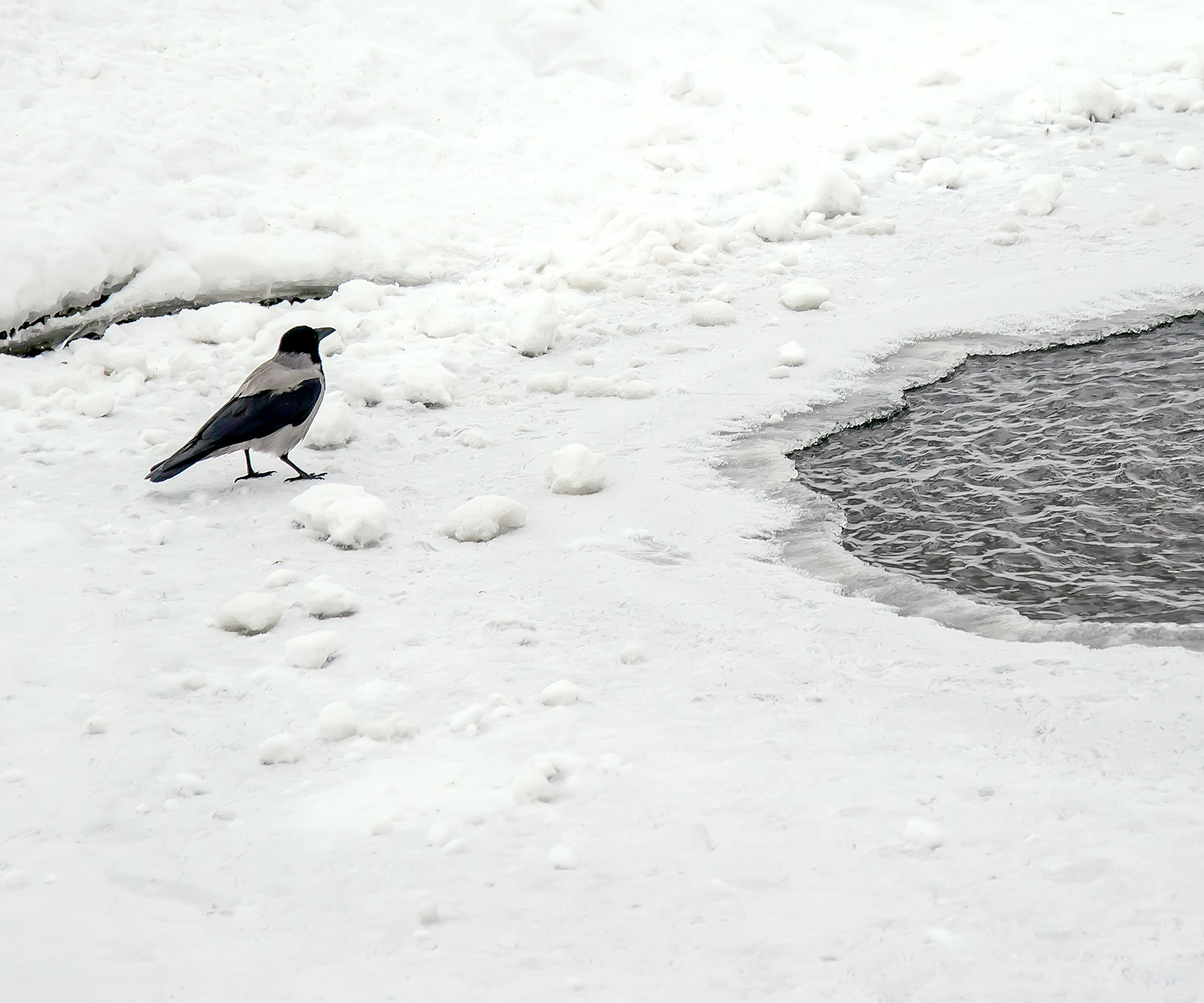
Birds will also appreciate defrosted ponds as places to bath and tend to their plumage
While the above approaches are more effective at actually heating a pond, if you only need a little insulation, a pond cover might just do the job. In a way, it's similar to the methods of protecting plants from frost, such as wrapping them with fleece or putting them in a greenhouse.
'A pond cover will keep cold winter winds and frosts at bay, which helps the water hold its heat, and will also keep leaves and debris out,' says Rachel Bull, Head of Gardens at Homes and Gardens. 'When I was growing up we always covered our backyard pond in winter, even though it wasn't enormous. It helps to keep the pond clean of fallen leaves, and is a way to protect the fish from being eaten by hungry predators too.
'Covering a pond also prevents it from being a hazard to pets and small children who may be in the garden after dark in winter,' she adds.
Rather than allowing a cover to directly rest on the water, go for one that is supported by beams or straps to allow space for gas exchange and stop rain or snow from weighing it down.
There are pre-made structures available to buy. However, some people make their own, often with polycarbonate sheets – just remember to leave a small gap for oxygen to get in and toxins to get out to keep pond plants healthy.

Rachel is a gardening writer, flower grower and floral designer. Her journalism career began 15 years ago on Country Living magazine, sparking a love of container gardening and wild planting. After more than a decade writing for and editing a range of consumer, business and special interest titles, Rachel became editor of floral art magazine The Flower Arranger. She then trained and worked as a floral designer and stylist in London for six years, and has created floral installations at iconic London venues including Kew Gardens, the Barbican and Peckham's Asylum Chapel.
5. Invest in a de-icer
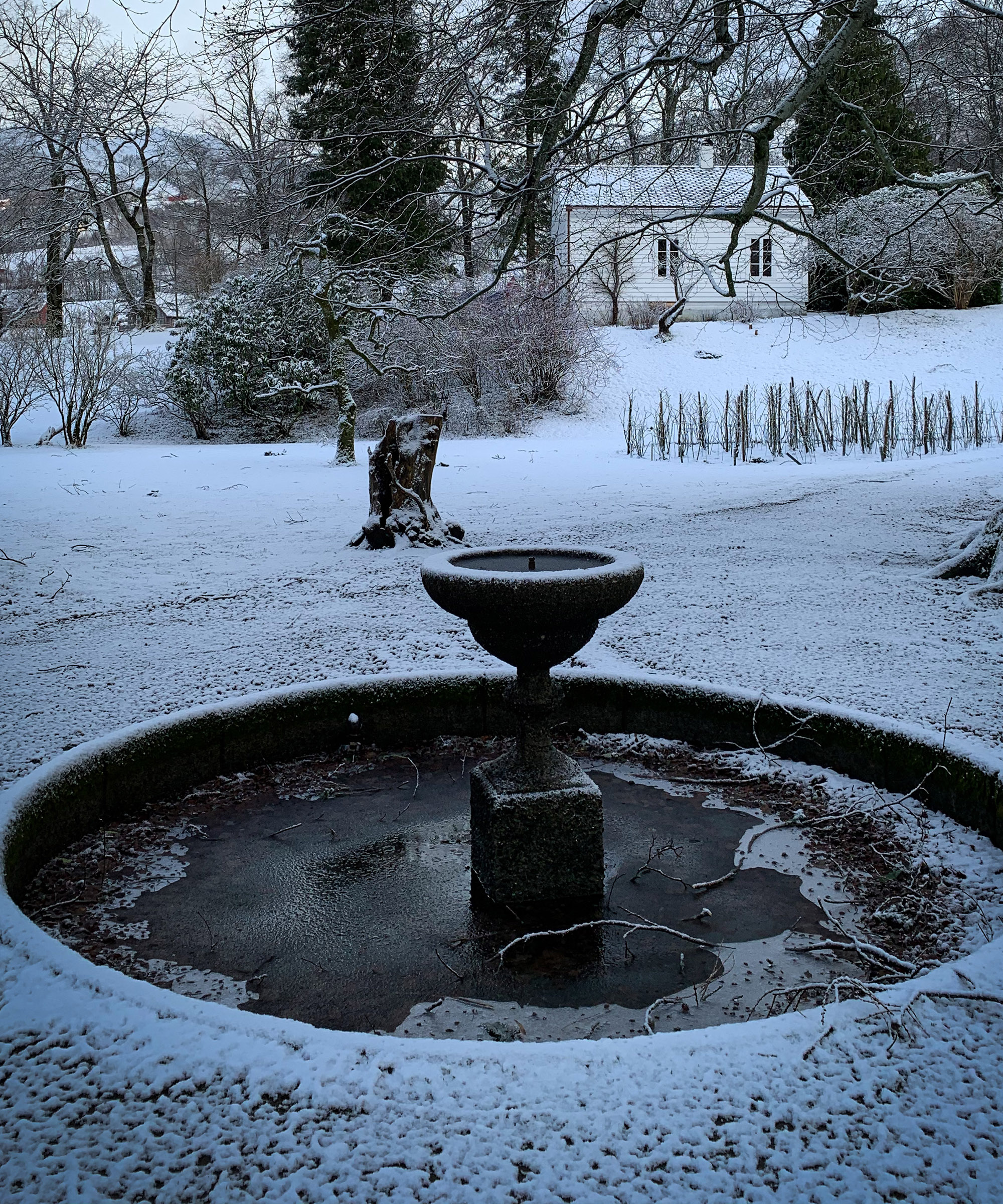
Often, a de-icer is all that's really needed to keep a pond in a healthy condition over winter
Although de-icers won't heat your pond, they are a very useful addition for keeping your fish healthy through winter in your wildlife garden.
A floating de-icer is designed to prevent any frost from forming. This is important as even the smallest layer of frost can reduce oxygen levels. Having holes in the ice will also allow harmful gases to escape, and beneficial bacteria to continue to thrive in your pond's ecosystem.
Some de-icers will simply create a small air hole in the ice, while some will stop ice from forming completely (depending on the model, your climate, and the size of your pond). Either way, they tend to be very effective.
Some of these devices also feature thermostatic control. This stops them from overheating, thus protecting your fish from being exposed to high temperatures. You can find a selection of de-icers on Amazon.
FAQs
What is the cheapest way to heat a pond?
In order to actually heat your pond, the cheapest option is probably a submersible electric heater. These can be picked up for less than a hundred dollars and have no installation costs.
For small ponds you might get away with a pond cover, which will help trap in heat and therefore raise the temperature somewhat, keeping it from freezing over during cold periods.
Only if you have a large pond, or one that contains tropical fish, you can consider a gas heat exchanger or in-line electric heater.
However there are easier methods, which require no installation, for warming your pond such as pond covers, de-icers and submersible electric heaters.

Holly started writing about gardening five years ago, and she is a regular contributor to Homes & Gardens. She has also written many gardening features for Woman & Home and Real Homes, too. She has previous experience as a professional gardener, where she helped to plant and maintain private gardens. Holly has also looked after allotment plots over the years and loves to grow her own flowers and veggies from seed. In her spare time, she enjoys visiting local gardens, botanical drawing, and tending to her ever-growing collection of houseplants.